-
Executive Summary
-
Scope of the Report
-
Market Definition
-
Scope of the Study
- Research Objectives
- Assumptions & Limitations
-
Market Structure
-
Market Research Methodology
-
Research Process
-
Secondary Research
-
Primary Research
-
Forecast Model
-
Market Landscape
-
Supply Chain Analysis
- Raw Material Suppliers
- Manufacturers/Producers
- Distributors/Retailers/Wholesalers/E-Commerce
- End Users
-
Porter’s Five
- Bargaining Power of Suppliers
- Threat of Substitutes
- Internal Rivalry
-
Forces Analysis
-
4.2.1
-
Threat of New Entrants
-
4.2.2
-
Bargaining Power of Buyers
-
Market Dynamics of the Global Probiotics in Animal
-
Feed Market
-
5.1
-
Introduction
-
5.2
-
Drivers
-
5.3
-
Restraints
-
5.4
-
Opportunities
-
5.5
-
Challenges
-
6.
-
Global Probiotics in the Animal Feed Market, by Source
-
Introduction
-
Bacteria
- Market Estimates & Forecast, 2023-2030
- Market Estimates
- Streptococcus
- Lactobacillus
- Bifidobacterium
- Others
-
& Forecast, by Region, 2023-2030
-
& Forecast, by Region, 2023-2030
-
& Forecast, by Region, 2023-2030
-
& Forecast, by Region, 2023-2030
-
& Forecast, by Region, 2023-2030
-
Yeast & Fungi
- Market Estimates & Forecast, 2023-2030
- Market Estimates
-
& Forecast, by Region, 2023-2030
-
Global Probiotics in Animal Feed Market, by Form
-
Introduction
-
Dry
- Market Estimates &
-
Forecast, 2023-2030
-
7.2.2
-
Market Estimates & Forecast, by Region, 2023-2030
-
Liquid
- Market Estimates & Forecast, 2023-2030
- Market Estimates
-
& Forecast, by Region, 2023-2030
-
Global Probiotics in Animal Feed Market, by Livestock
-
Introduction
-
Swine
- Market Estimates &
-
Forecast, 2023-2030
-
8.2.2
-
Market Estimates & Forecast, by Region, 2023-2030
-
Poultry
- Market Estimates & Forecast, 2023-2030
- Market Estimates
-
& Forecast, by Region, 2023-2030
-
Ruminants
- Market Estimates & Forecast, 2023-2030
- Market Estimates
-
& Forecast, by Region, 2023-2030
-
Aquaculture
- Market Estimates & Forecast, 2023-2030
- Market Estimates
-
& Forecast, by Region, 2023-2030
-
Others
- Market Estimates & Forecast, 2023-2030
- Market Estimates
-
& Forecast, by Region, 2023-2030
-
Global Probiotics in Animal Feed Market, by Region
-
Introduction
-
North America
- Market Estimates
- Market Estimates & Forecast, by Source, 2023-2030
- Market Estimates
- Market Estimates & Forecast, by Livestock, 2023-2030
- US
-
& Forecast, 2023-2030
-
& Forecast, by Form, 2023-2030
-
Forecast, 2023-2030
-
9.2.5.2
-
Market Estimates & Forecast, by Source, 2023-2030
-
9.2.5.4
-
Market Estimates & Forecast, by Form,
-
Market Estimates & Forecast, by Livestock, 2023-2030
-
& Forecast, by Source, 2023-2030
-
& Forecast, by Livestock, 2023-2030
-
& Forecast, by Source, 2023-2030
-
& Forecast, by Livestock, 2023-2030
-
& Forecast, by Source, 2023-2030
-
& Forecast, by Livestock, 2023-2030
-
& Forecast, by Source, 2023-2030
-
& Forecast, by Livestock, 2023-2030
-
& Forecast, by Source, 2023-2030
-
& Forecast, by Livestock, 2023-2030
-
& Forecast, by Source, 2023-2030
-
& Forecast, by Livestock, 2023-2030
-
& Forecast, by Source, 2023-2030
-
& Forecast, by Livestock, 2023-2030
-
Forecast, by Source, 2023-2030
-
& Forecast, by Livestock, 2023-2030
-
& Forecast, by Source, 2023-2030
-
& Forecast, by Livestock, 2023-2030
-
& Forecast, by Source, 2023-2030
-
& Forecast, by Livestock, 2023-2030
-
& Forecast, by Source, 2023-2030
-
& Forecast, by Livestock, 2023-2030
-
& Forecast, by Source, 2023-2030
-
& Forecast, by Livestock, 2023-2030
-
& Forecast, by Source, 2023-2030
-
& Forecast, by Livestock, 2023-2030
-
& Forecast, by Source, 2023-2030
-
& Forecast, by Livestock, 2023-2030
-
& Forecast, by Source, 2023-2030
-
& Forecast, by Livestock, 2023-2030
-
& Forecast, by Source, 2023-2030
-
& Forecast, by Livestock, 2023-2030
-
& Forecast, by Source, 2023-2030
-
& Forecast, by Livestock, 2023-2030
-
& Forecast, by Source, 2023-2030
-
& Forecast, by Livestock, 2023-2030
-
& Forecast, by Source, 2023-2030
-
& Forecast, by Livestock, 2023-2030
-
Canada
-
Market Estimates & Forecast, 2023-2030
-
Market Estimates
-
Market Estimates & Forecast, by Form, 2023-2030
-
Market Estimates
-
Mexico
-
Market Estimates & Forecast, 2023-2030
-
Market Estimates
-
Market Estimates & Forecast, by Form, 2023-2030
-
Market Estimates
-
Europe
- Market Estimates & Forecast, 2023-2030
- Market Estimates
- Market Estimates & Forecast, by Form, 2023-2030
- Market Estimates
- Germany
- France
- Italy
- Spain
- UK
- Rest of Europe
-
Asia-Pacific
- Market Estimates & Forecast, 2023-2030
- Market Estimates
- Market Estimates & Forecast, by Form, 2023-2030
- Market Estimates
- China
- India
- Japan
- Australia & New Zealand
- Rest of Asia-Pacific
-
Rest of the World (RoW)
- Market Estimates & Forecast, 2023-2030
- Market Estimates
- Market Estimates & Forecast, by Form, 2023-2030
- Market Estimates
- South America
- Middle East
- Africa
-
Company Landscape
-
Introduction
-
Market Strategy
-
Key Development Analysis
-
(Expansions/Mergers & Acquisitions/Joint Ventures/New
-
Product Developments/Agreements/Investments)
-
Company Profiles
-
Chr. Hansen Holding A/S
- Company Overview
- Financial Updates
- Product/Business Segment Overview
- Strategy
- Key Developments
- SWOT Analysis
-
Novozymes
- Company Overview
- Financial Updates
- Product/Business
- Strategy
- Key Developments
- SWOT Analysis
-
Segment Overview
-
11.2.4
-
Strategy
-
11.2.5
-
Key Developments
-
11.2.6
-
SWOT Analysis
-
11.3
-
Kerry Group
-
11.3.1
-
Company Overview
-
11.3.2
-
Financial Updates
-
11.3.3
-
Product/Business Segment Overview
-
DuPont de Nemours, Inc.
- Company Overview
- Financial Updates
- Product/Business Segment Overview
- Strategy
- Key Developments
- SWOT Analysis
-
Evonik Industries
- Company
- Strategy
- Key Developments
- SWOT Analysis
-
AG
-
Overview
-
11.5.2
-
Financial Updates
-
11.5.3
-
Product/Business Segment Overview
-
Land O''Lakes, Inc.
- Company Overview
- Financial Updates
- Product/Business Segment Overview
- Strategy
- Key Developments
- SWOT Analysis
-
Pure Cultures
- Company Overview
- Financial Updates
- Product/Business
- Company Overview
- Financial Updates
- Product/Business Segment Overview
- Strategy
- Key Developments
- SWOT Analysis
-
Segment Overview
-
11.7.4
-
Strategy
-
11.7.5
-
Key Developments
-
11.7.6
-
SWOT Analysis
-
11.8
-
Bluestar Adisseo Co., Ltd.
-
Novus International,
- Strategy
- Key Developments
- SWOT Analysis
-
Inc.
-
11.9.1
-
Company Overview
-
11.9.2
-
Financial Updates
-
11.9.3
-
Product/Business Segment Overview
-
Koninklijke DSM N.V.
- Company Overview
- Financial Updates
- Product/Business Segment Overview
- Strategy
- Key Developments
- SWOT Analysis
-
Schouw & Co.
- Company Overview
- Financial Updates
- Product/Business
- Strategy
- Key Developments
- SWOT Analysis
-
Segment Overview
-
11.11.4
-
Strategy
-
11.11.5
-
Key Developments
-
11.11.6
-
SWOT Analysis
-
11.12
-
Lesaffre
-
11.12.1
-
Company Overview
-
11.12.2
-
Financial Updates
-
11.12.3
-
Product/Business Segment Overview
-
Lallemand Inc.
- Company Overview
- Financial Updates
- Product/Business Segment Overview
- Strategy
- Key Developments
- SWOT Analysis
-
Alltech
- Company Overview
- Financial Updates
- Product/Business
-
Segment Overview
-
11.14.4
-
Strategy
-
11.14.5
-
Key Developments
-
11.14.6
-
SWOT Analysis
-
12.
-
Conclusion
-
-
LIST OF TABLES
-
Global Probiotics
-
in Animal Feed Market, by Region, 2023-2030 (USD Million)
-
Global Probiotics in Animal Feed Market,
-
by Source, 2023-2030 (USD Million)
-
Global Probiotics in Animal Feed Market, by Form,
-
Global Probiotics in Animal Feed Market, by Livestock, 2023-2030
-
(USD Million)
-
Table
-
North America: Probiotics in Animal Feed Market, by Country, 2023-2030 (USD Million)
-
North America:
-
Probiotics in Animal Feed Market, by Source, 2023-2030 (USD Million)
-
North America: Probiotics
-
in Animal Feed Market, by Form, 2023-2030 (USD Million)
-
North America: Probiotics in Animal Feed
-
Market, by Livestock, 2023-2030 (USD Million)
-
US: Probiotics in Animal Feed Market, by
-
Source, 2023-2030 (USD Million)
-
US: Probiotics in Animal Feed Market, by Form, 2023-2030 (USD
-
Million)
-
Table
-
US: Probiotics in Animal Feed Market, by Livestock, 2023-2030 (USD Million)
-
Canada: Probiotics
-
in Animal Feed Market, by Source, 2023-2030 (USD Million)
-
Canada: Probiotics in Animal Feed Market,
-
by Form, 2023-2030 (USD Million)
-
Canada: Probiotics in Animal Feed Market, by Livestock, 2023-2030
-
(USD Million)
-
Table
-
Mexico: Probiotics in Animal Feed Market, by Source, 2023-2030 (USD Million)
-
Mexico: Probiotics
-
in Animal Feed Market, by Form, 2023-2030 (USD Million)
-
Mexico: Probiotics in Animal Feed Market,
-
by Livestock, 2023-2030 (USD Million)
-
Europe: Probiotics in Animal Feed Market, by Country,
-
Europe: Probiotics in Animal Feed Market, by Source, 2023-2030
-
(USD Million)
-
Table
-
Europe: Probiotics in Animal Feed Market, by Form, 2023-2030 (USD Million)
-
Europe: Probiotics
-
in Animal Feed Market, by Livestock, 2023-2030 (USD Million)
-
Germany: Probiotics in Animal Feed Market,
-
by Source, 2023-2030 (USD Million)
-
Germany: Probiotics in Animal Feed Market, by Form,
-
Germany: Probiotics in Animal Feed Market, by Livestock, 2023-2030
-
(USD Million)
-
Table
-
France: Probiotics in Animal Feed Market, by Source, 2023-2030 (USD Million)
-
France: Probiotics
-
in Animal Feed Market, by Form, 2023-2030 (USD Million)
-
France: Probiotics in Animal Feed Market,
-
by Livestock, 2023-2030 (USD Million)
-
Italy: Probiotics in Animal Feed Market, by Source,
-
Italy: Probiotics in Animal Feed Market, by Form, 2023-2030
-
(USD Million)
-
Table
-
Italy: Probiotics in Animal Feed Market, by Livestock, 2023-2030 (USD Million)
-
Spain: Probiotics
-
in Animal Feed Market, by Source, 2023-2030 (USD Million)
-
Spain: Probiotics in Animal Feed Market,
-
by Form, 2023-2030 (USD Million)
-
Spain: Probiotics in Animal Feed Market, by Livestock, 2023-2030
-
(USD Million)
-
Table
-
UK: Probiotics in Animal Feed Market, by Source, 2023-2030 (USD Million)
-
UK: Probiotics
-
in Animal Feed Market, by Form, 2023-2030 (USD Million)
-
UK: Probiotics in Animal Feed Market, by
-
Livestock, 2023-2030 (USD Million)
-
Rest of Europe: Probiotics in Animal Feed Market,
-
by Source, 2023-2030 (USD Million)
-
Rest of Europe: Probiotics in Animal Feed Market,
-
by Form, 2023-2030 (USD Million)
-
Rest of Europe: Probiotics in Animal Feed Market, by Livestock,
-
Asia-Pacific: Probiotics in Animal Feed Market, by Country,
-
Asia-Pacific: Probiotics in Animal Feed Market, by Source,
-
Asia-Pacific: Probiotics in Animal Feed Market, by Form, 2023-2030
-
(USD Million)
-
Table
-
Asia-Pacific: Probiotics in Animal Feed Market, by Livestock, 2023-2030 (USD
-
Million)
-
Table
-
China: Probiotics in Animal Feed Market, by Source, 2023-2030 (USD Million)
-
China: Probiotics
-
in Animal Feed Market, by Form, 2023-2030 (USD Million)
-
China: Probiotics in Animal Feed Market,
-
by Livestock, 2023-2030 (USD Million)
-
India: Probiotics in Animal Feed Market, by Source,
-
India: Probiotics in Animal Feed Market, by Form, 2023-2030
-
(USD Million)
-
Table
-
India: Probiotics in Animal Feed Market, by Livestock, 2023-2030 (USD Million)
-
Japan: Probiotics
-
in Animal Feed Market, by Source, 2023-2030 (USD Million)
-
Japan: Probiotics in Animal Feed Market,
-
by Form, 2023-2030 (USD Million)
-
Japan: Probiotics in Animal Feed Market, by Livestock, 2023-2030
-
(USD Million)
-
Table
-
Rest of Asia-Pacific: Probiotics in Animal Feed Market, by Source, 2023-2030
-
(USD Million)
-
Table
-
Rest of Asia-Pacific: Probiotics in Animal Feed Market, by Form, 2023-2030 (USD
-
Million)
-
Table
-
Rest of Asia-Pacific: Probiotics in Animal Feed Market, by Livestock, 2023-2030
-
(USD Million)
-
Table
-
Rest of the World (RoW): Probiotics in Animal Feed Market, by Country, 2023-2030
-
(USD Million)
-
Table
-
Rest of the World (RoW): Probiotics in Animal Feed Market, by Source, 2023-2030
-
(USD Million)
-
Table
-
Rest of the World (RoW): Probiotics in Animal Feed Market, by Form, 2023-2030
-
(USD Million)
-
Table
-
Rest of the World (RoW): Probiotics in Animal Feed Market, by Livestock, 2023-2030
-
(USD Million)
-
Table
-
South America: Probiotics in Animal Feed Market, by Source, 2023-2030 (USD Million)
-
South America:
-
Probiotics in Animal Feed Market, by Form, 2023-2030 (USD Million)
-
South America: Probiotics
-
in Animal Feed Market, by Livestock, 2023-2030 (USD Million)
-
Middle East: Probiotics in Animal Feed Market,
-
by Source, 2023-2030 (USD Million)
-
Middle East: Probiotics in Animal Feed Market,
-
by Form, 2023-2030 (USD Million)
-
Middle East: Probiotics in Animal Feed Market, by Livestock,
-
Africa: Probiotics in Animal Feed Market, by Source, 2023-2030
-
(USD Million)
-
Table
-
Africa: Probiotics in Animal Feed Market, by Form, 2023-2030 (USD Million)
-
Africa: Probiotics
-
in Animal Feed Market, by Livestock, 2023-2030 (USD Million)
-
LIST OF FIGURES
-
Global Probiotics
-
in Animal Feed Market Segmentation
-
Forecast Research Methodology
-
Five Forces Analysis
-
of the Global Probiotics in Animal Feed Market
-
Value Chain of Global Probiotics in Animal
-
Feed Market
-
FIGURE
-
Share of the Global Probiotics in Animal Feed Market in 2023, by Country (%)
-
Global Probiotics
-
in Animal Feed Market, by Region, 2023-2030,
-
Global Probiotics in Animal Feed Market
-
Size, by Source, 2023
-
FIGURE
-
Share of the Global Probiotics in Animal Feed Market, by Source, 2023-2030 (%)
-
Global Probiotics
-
in Animal Feed Market Size, by Livestock, 2023
-
Share of the Global Probiotics in Animal
-
Feed Market, by Livestock, 2023-2030 (%)
-
Global Probiotics in Animal Feed Market Size,
-
by Form, 2023
-
FIGURE
-
Share of the Global Probiotics in Animal Feed Market, by Form, 2023-2030 (%)

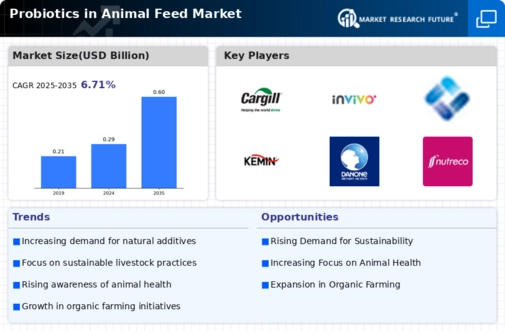
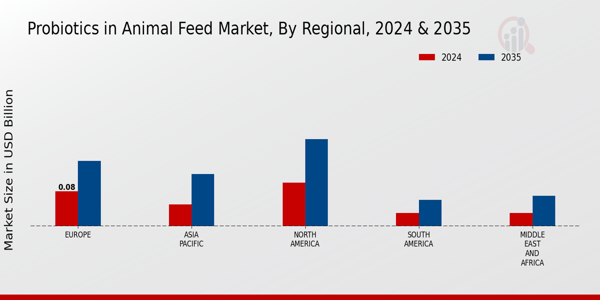

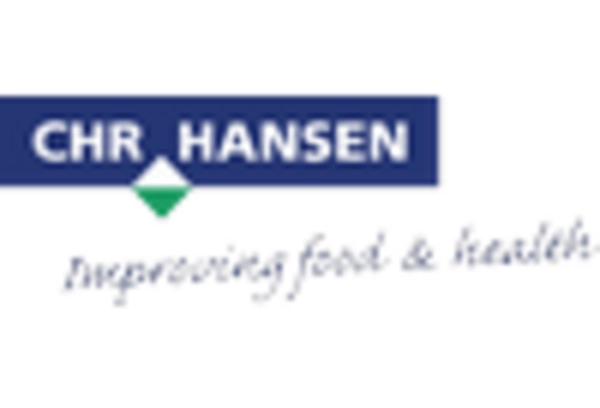
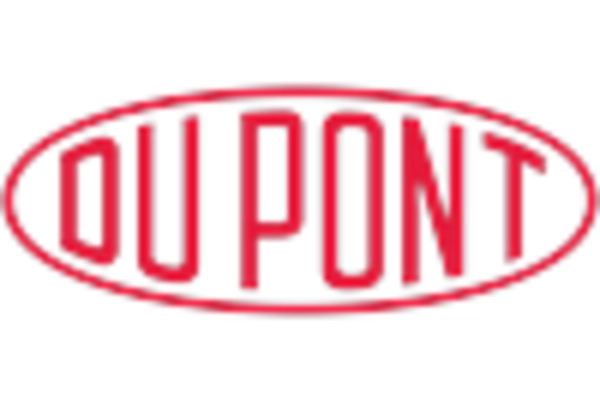

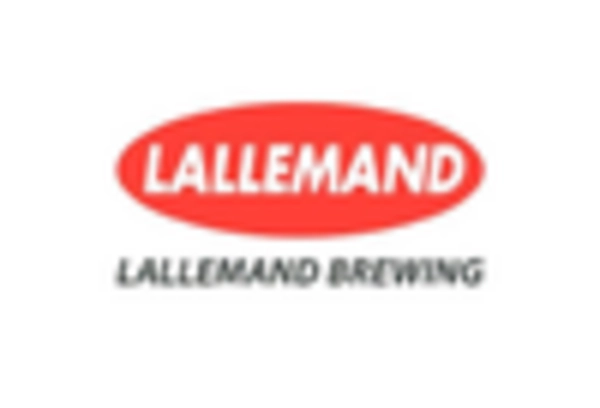


Leave a Comment